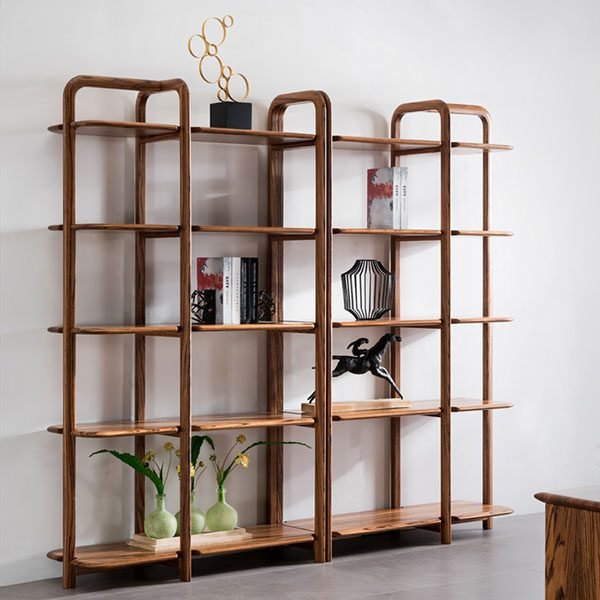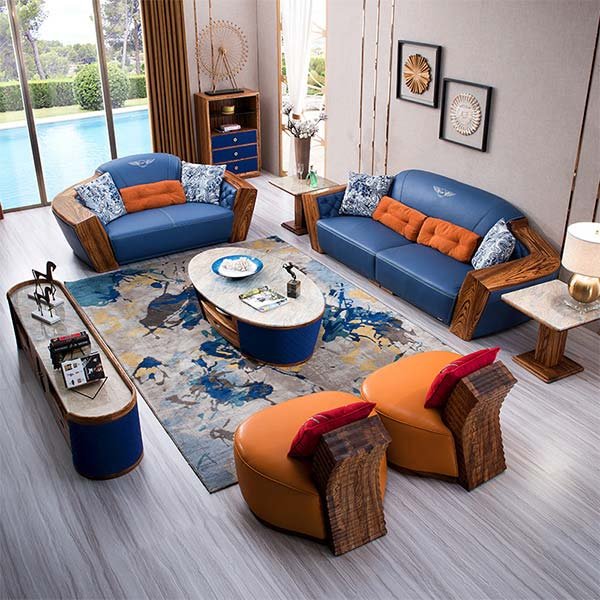“Transform your furniture with a stroke of creativity!”
Choosing the Right Paint for Furniture
Choosing the Right Paint for Furniture
When it comes to painting furniture, choosing the right paint is crucial. The type of paint you use can determine the durability and overall appearance of your finished piece. In this article, we will discuss the different types of paint available for furniture and provide tips on how to choose the best one for your project.
One of the most popular types of paint for furniture is latex paint. Latex paint is water-based and offers a smooth and durable finish. It is easy to clean up with soap and water, making it a convenient choice for DIY projects. Latex paint also comes in a wide range of colors, allowing you to easily find the perfect shade for your furniture.
Another option to consider is chalk paint. Chalk paint has gained popularity in recent years due to its unique matte finish and ability to adhere to almost any surface without the need for priming or sanding. It is a great choice for achieving a vintage or shabby chic look. Chalk paint is also easy to distress, allowing you to create a weathered or aged appearance on your furniture.
If you are looking for a more professional finish, oil-based paint may be the right choice for you. Oil-based paint provides a smooth and glossy finish that is highly durable. It is resistant to chipping and can withstand heavy use, making it ideal for high-traffic areas. However, oil-based paint has a strong odor and requires mineral spirits for cleanup, so proper ventilation and safety precautions are necessary when using it.
Before choosing a paint, it is important to consider the type of furniture you are working with. For example, if you are painting a piece made of wood, you may want to opt for a paint that allows the natural grain to show through, such as a stain or a transparent finish. On the other hand, if you are painting a piece made of metal or plastic, you will need a paint that is specifically designed for those materials.
In addition to considering the type of furniture, you should also think about the desired look and feel of your finished piece. If you want a smooth and flawless finish, a paint with a satin or semi-gloss sheen would be a good choice. If you prefer a more rustic or textured look, a paint with a matte or flat finish would be more suitable.
When choosing a paint color, it is important to take into account the overall style and color scheme of your space. If you want your furniture to blend in seamlessly with the rest of your decor, choose a paint color that complements the existing colors in your room. If you want your furniture to make a statement, consider using a bold or contrasting color.
In conclusion, choosing the right paint for furniture is essential for achieving a successful and long-lasting finish. Consider the type of paint, the type of furniture, and the desired look and feel when making your decision. With the right paint, you can transform your furniture and create a beautiful and personalized piece for your home.
Preparing Furniture for Painting
Preparing Furniture for Painting
When it comes to painting furniture, proper preparation is key to achieving a smooth and long-lasting finish. Whether you’re looking to update an old piece or give a new piece a personal touch, taking the time to prepare the furniture before painting will ensure the best results. In this article, we will guide you through the steps of preparing furniture for painting.
The first step in preparing furniture for painting is to clean it thoroughly. Remove any dust, dirt, or grime using a mild detergent and water solution. Scrub the surface gently with a soft brush or sponge, paying attention to any crevices or intricate details. Rinse the furniture with clean water and allow it to dry completely before moving on to the next step.
Next, you’ll want to remove any existing finish or paint from the furniture. This can be done using sandpaper or a chemical paint stripper. If using sandpaper, start with a coarse grit to remove the majority of the finish, then switch to a finer grit to smooth out the surface. Be sure to sand in the direction of the wood grain to avoid damaging the furniture. If using a paint stripper, follow the manufacturer’s instructions carefully and wear protective gloves and eyewear.
After removing the old finish, it’s important to repair any damage or imperfections on the furniture. Fill in any cracks, holes, or dents with wood filler or putty. Smooth out the surface with a putty knife and allow it to dry completely. Once dry, sand the repaired areas to ensure a seamless finish.
Once the furniture is clean, stripped, and repaired, it’s time to prime it. Applying a primer will help the paint adhere better and provide a more even finish. Choose a primer that is suitable for the type of furniture you’re painting, whether it’s wood, metal, or laminate. Apply the primer evenly using a brush or roller, following the manufacturer’s instructions for drying time.
After the primer has dried, it’s time to paint the furniture. Choose a paint that is specifically formulated for furniture, such as latex or acrylic paint. Consider the desired color and finish, and apply the paint evenly using a brush or roller. Allow the first coat to dry completely before applying additional coats for a more opaque finish. Sand lightly between coats to ensure a smooth surface.
Finally, protect your newly painted furniture by applying a clear topcoat or sealer. This will help protect the paint from chipping, scratching, and fading over time. Choose a topcoat that is suitable for the type of paint you used and apply it according to the manufacturer’s instructions.
In conclusion, preparing furniture for painting is an essential step in achieving a professional-looking finish. By cleaning, stripping, repairing, priming, painting, and sealing the furniture, you can ensure that your painted piece will not only look great but also withstand the test of time. So, before you pick up that paintbrush, take the time to properly prepare your furniture for painting.
Techniques for Painting Furniture
Painting furniture is a great way to give old or worn-out pieces a fresh new look. Whether you’re a beginner or an experienced DIYer, there are several techniques you can use to achieve professional-looking results. In this article, we will explore some of the most popular techniques for painting furniture.
One of the first techniques to consider is sanding. Sanding the furniture before painting helps to create a smooth surface and allows the paint to adhere better. Start by using a medium-grit sandpaper to remove any existing finish or rough spots. Then, switch to a fine-grit sandpaper to further smooth the surface. Remember to always sand in the direction of the wood grain for the best results.
After sanding, it’s important to clean the furniture thoroughly. Use a damp cloth or sponge to remove any dust or debris from the surface. This step ensures that the paint will adhere properly and prevents any imperfections in the final finish.
Next, consider using a primer. Primer helps to create a smooth and even base for the paint. It also helps to seal the wood and prevent any stains or bleed-through. Apply the primer evenly using a brush or roller, and allow it to dry completely before moving on to the next step.
Once the primer is dry, it’s time to apply the paint. There are several options to choose from, including latex, oil-based, or chalk paint. Latex paint is easy to use and dries quickly, while oil-based paint provides a more durable finish. Chalk paint, on the other hand, creates a vintage or distressed look. Choose the type of paint that best suits your desired outcome.
When applying the paint, use smooth and even strokes. Start from the top of the furniture and work your way down, ensuring that you cover all surfaces evenly. Depending on the desired finish, you may need to apply multiple coats of paint. Allow each coat to dry completely before applying the next one.
To add depth and dimension to your painted furniture, consider using a technique called distressing. Distressing involves sanding or scraping the painted surface to reveal the underlying wood or previous layers of paint. This technique gives the furniture a worn or aged look and adds character to the piece.
Once you’re satisfied with the paint job, it’s time to protect the finish. Applying a clear topcoat or sealer helps to protect the paint from scratches and stains. Choose a topcoat that is compatible with the type of paint you used. Apply the topcoat evenly using a brush or roller, and allow it to dry completely before using the furniture.
In conclusion, painting furniture is a rewarding DIY project that can transform old or worn-out pieces into beautiful and stylish additions to your home. By following these techniques, you can achieve professional-looking results. Remember to sand, clean, prime, and paint the furniture using smooth and even strokes. Consider distressing for added character, and protect the finish with a clear topcoat. With a little time and effort, you can create stunning painted furniture that will be the envy of all your friends and family.
Заключение
Заключение о том, как покрасить мебель:
1. Подготовьте поверхность: очистите мебель от пыли и грязи, а также удалите старую краску или лак при необходимости.
2. Шлифуйте поверхность: используйте шлифовальную бумагу или шлифовальную машину, чтобы создать гладкую и ровную поверхность для покраски.
3. Примените грунт: нанесите слой грунта на мебель, чтобы обеспечить лучшую адгезию краски и защитить поверхность от погребения.
4. Покрасьте мебель: используйте кисть, валик или распылитель, чтобы нанести равномерный слой краски на поверхность мебели. Позвольте каждому слою высохнуть перед нанесением следующего.
5. Защитите поверхность: после полного высыхания краски, нанесите защитный слой, такой как лак или воск, чтобы защитить мебель от повреждений и придать ей дополнительный блеск.
6. Дайте время для полного высыхания: убедитесь, что мебель полностью высохла перед использованием или передвижением, чтобы избежать повреждений или потери качества покрытия.
Важно помнить, что каждая поверхность и тип краски могут требовать индивидуального подхода. Следуйте инструкциям на упаковке выбранной краски и используйте подходящие инструменты и защитные средства для достижения наилучших результатов.



